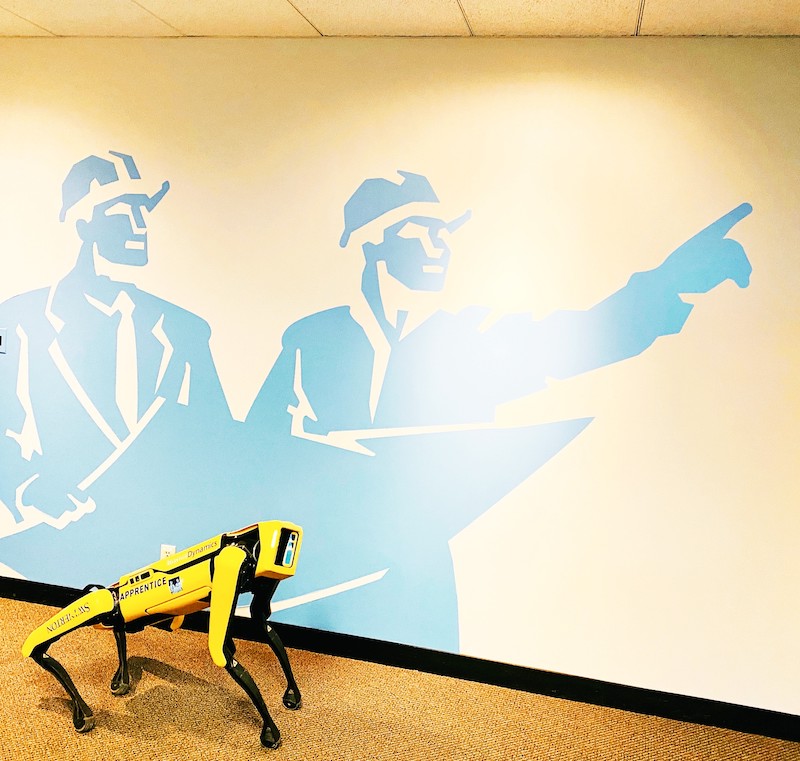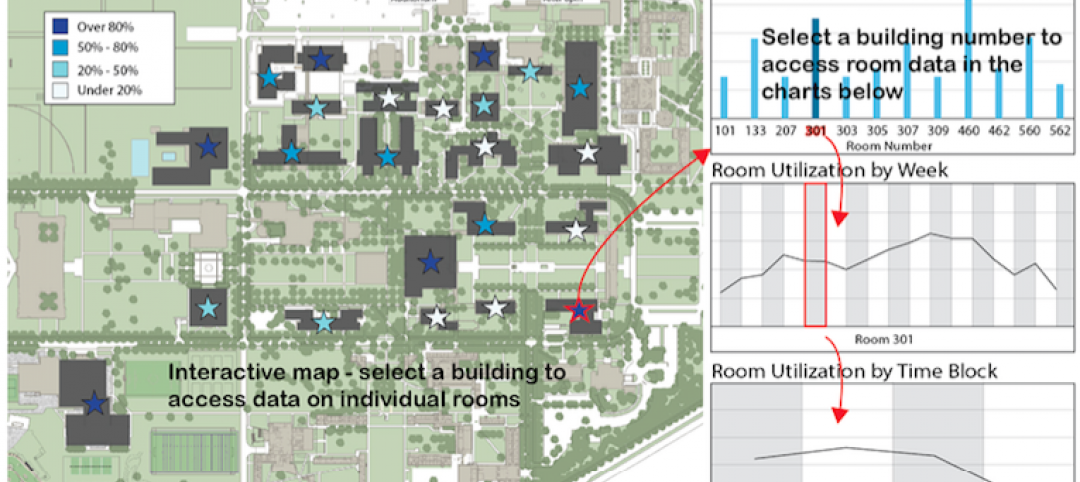Swinerton, the national construction services provider, is among the GCs that are embracing construction technology is various ways.
It is using high-definition 3D scanning technology to provide clients with such benefits as time-stamping work with preserved historical data, minimizing client travel thanks to remote walk-through capabilities, and coordinating subcontractors with an eye toward minimizing change orders and errors.
The firm’s prefab and modular construction capabilities leverage technology to reduce construction costs by as much as 20% per project, improve quality and safety, and expedite a project’s completion.
And on a number of its jobsites, Swinerton has been testing Boston Dynamics’ quadruped robot, better known as Spot Dog, for walk-throughs to inspect progress (such as tracking the numbers of studs or electrical conduit installed daily), measure and report data points, create a digital twin, and compare as-built to BIM.
Meet Spot Dog: The robotic inspection dog for construction jobsites
The three-foot-tall yellow robot “is an incredibly capable machine,” says Eric Law, Swinerton’s senior director of technology and innovation, whom BD+C interviewed last week with Tristen Magallanes, the firm’s innovation analyst; and Brian Ringley, a construction technology manager with Boston Dynamics.
Swinerton has been testing Spot Dog for four months. It used the robot to track the interior work within a ground-up medical office building in Redwood City, Calif. (That robot has since been relocated to one of Swinerton’s other projects in Austin, Texas.) The robot was also at work at the Queen Emma Building in Honolulu, Hawaii, where Swinerton is reconstructing an office building to affordable apartments.
The robot in use in Honolulu, which can handle a payload of up to 30 lbs., was equipped with a laser scanner and 360-degree camera. The robot, explains Ringley, can be controlled directly or tele-operated from offsite. There’s also an “auto-walk” feature where the user takes the robot to where he or she wants it to go, and artificial intelligence lets the robot repeats that pattern and tasks.
A video of Spot Dog in action in Honolulu can be viewed here.

Spot Dog, standing in front of Swinerton's brand image.
Law notes that a robot is better suited for capturing repetitive data because humans “have a hard time walking the same path everyday.” Spot Dog is also capable of navigating uneven terrain, and can be programmed to avoid obstacles.
Boston Dynamics has about 100 of these robots in the field, confirms Ringley, all of them under leases that typically run from six to 12 months. He declined to discuss lease terms, except to say “it’s cheaper than leasing a car.”
Spot Dog was expected to complete its work at the Honolulu project sometime this month and be relocated to roam another Swinerton project.
Ringley says that Boston Dynamics is constantly tweaking its robots for better mobility, stability, and autonomy. Boston Dynamics is preparing to launch a 2.0 version of Spot Dog “soon,” he says, without disclosing any details.
Related Stories
AEC Tech | Aug 25, 2017
Software cornucopia: Jacksonville Jaguars’ new practice facility showcases the power of computational design
The project team employed Revit, Rhino, Grasshopper, Kangaroo, and a host of other software applications to design and build this uber-complex sports and entertainment facility.
AEC Tech | Aug 24, 2017
Big Data helps space optimization, but barriers remain
Space optimization is a big issue on many university campuses, as schools face increasing financial constraints, writes Hanbury’s Jimmy Stevens.
Lighting | Aug 2, 2017
Dynamic white lighting mimics daylighting
By varying an LED luminaire’s color temperature, it is possible to mimic daylighting, to some extent, and the natural circadian rhythms that accompany it, writes DLR Group’s Sean Avery.
Office Buildings | Jul 20, 2017
SGA uses virtual design and construction technology to redevelop N.Y. building into modern offices
287 Park Avenue South is a nine-story Classical Revival building previously known as the United Charities Building.
Accelerate Live! | Jul 6, 2017
Watch all 20 Accelerate Live! talks on demand
BD+C’s inaugural AEC innovation conference, Accelerate Live! (May 11, Chicago), featured talks on machine learning, AI, gaming in construction, maker culture, and health-generating buildings.
| Jun 13, 2017
Accelerate Live! talk: Is the road to the future the path of least resistance? Sasha Reed, Bluebeam (sponsored)
Bluebeam’s Sasha Reed discusses why AEC leaders should give their teams permission to responsibly break things and create ecosystems of people, process, and technology.
| Jun 13, 2017
Accelerate Live! talk: 3D laser scanning for the project lifecycle, FARO Technologies (sponsored)
Brent Slawnikowski of FARO Technologies and Jennifer Suerth of Pepper Construction discuss how implementation of laser scanning has helped Pepper become more successful in the completion of their projects.
| Jun 13, 2017
Accelerate Live! talk: Incubating innovation through R&D and product development, Jonatan Schumacher, Thornton Tomasetti
Thornton Tomasetti’s Jonatan Schumacher presents the firm’s business model for developing, incubating, and delivering cutting-edge tools and solutions for the firm, and the greater AEC market.
| Jun 13, 2017
Accelerate Live! talk: The future of computational design, Ben Juckes, Yazdani Studio of CannonDesign
Yazdani’s Ben Juckes discusses the firm’s tech-centric culture, where scripting has become an every-project occurrence and each designer regularly works with computational tools as part of their basic toolset.
| Jun 13, 2017
Accelerate Live! talk: A case for Big Data in construction, Graham Cranston, Simpson Gumpertz & Heger
Graham Cranston shares SGH’s efforts to take hold of its project data using mathematical optimization techniques and information-rich interactive visual graphics.












